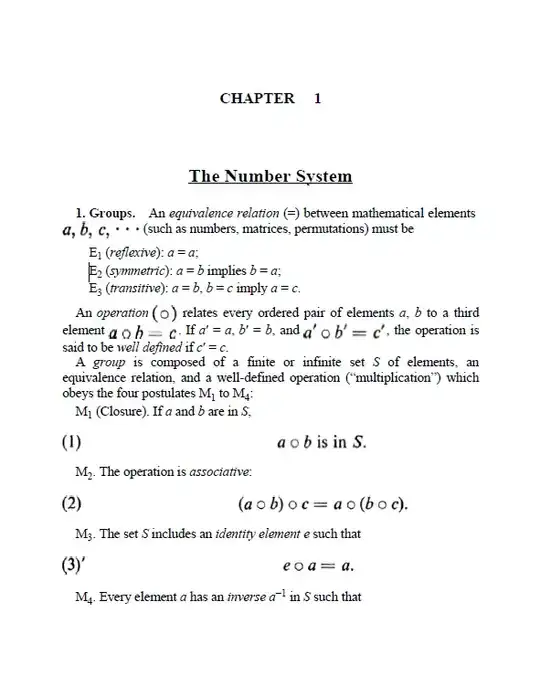It's been commented that "usually" an equivalence relation is denoted by $\sim$ instead of $=$. It seems to me that in fact $=$ is never used for an equivalence relation (other than equality). Using $=$ for an arbitrary equivalence relation is a hugely bad idea.
(i) It causes confusion.
(ii) It means we have no way to denote actual equality! That's a problem, for example:
If $\sim$ is an equivalence relation a standard definition of the "equivalence class" containing $x$ is $$[x]_\sim=\{y:y\sim x\}.$$ If we're using "$=$" to denote an equivalence relation then how can we write that definition? It becomes
$$[x]_==\{y:y= x\},$$which is impossibly bad notation: The symbol $=$ appears three times, twice referring to the equivalence relation under consideration and once to actual equality. Using the same symbol for two different things - totally wrong. I mean it looks like the author hasn't mastered basic undergraduate mathematical concepts.
(If as you say he's about to construct the real numbers then he will be talking about equivalence classes - I wonder how he gives the definition.)
The Point to Equivalence Relations and Equivalence Classes
To be fair, we should note that often the reason we introduce ann equivalence relation is we want to extend the meaning of "=". Fine, but we'd better not use the same symbol!
For example, say we have the integers $\Bbb Z$ and we want to define the rational numbers. We think about it: All that matters about $n/m$ is the values of $n$ and $m$, so could just talk about ordered pairs, since we already know what they are:
Def 1. A rational number is an ordered pair $(n,m)$ of integers with $m\ne0$.
That amounts to defining $1/2$ by $1/2=(1,2)$. Fine, except it doesn't work. We certainly want a definition such that $1/2=2/4$, but $(1,2)\ne(2,4)$.
"Intuitively" we change the defiinition:
Def 2. A rational number is an ordered pair $(n,m)$ of integers with $m\ne0$, except that $(n,m)=(p,q)$ if $nq=mp$.
That works better; now we have $1/2=(1,2)=(2,4)=2/4$, great. But the problem with that is we've redefined what "$=$" means, leading to problems like (i) and (ii) above.
So we introduce an equivalence relation. Say $$X=\{(n,m):n,m\in\Bbb Z, m\ne0\}.$$Define a relation $\sim$ on $X$ by $$(n,m)\sim(p,q)\text{ if }nq=mp.$$You verify that $\sim$ is ann equivalence relation, and now
Def 3. A rational number is $[(n,m)]_\sim$ for $(n,m)\in X$.
(Or briefly, $\Bbb Q=X/\sim$.)
That works, in fact it's the standard definition. The point to Def 3 is we really wanted to give Def 2, but Def 2 makes no sense; Def 3 is a corrected version of Def 2.
I mention this because you will see many definitions analogous to Def 3; when you're trying to figure out what the definition "really means" the answer is often that it's a corrected version of something analogous to Def 2.
